Read about the latest releases in Vernon CMS and Vernon Browser, and find out what’s coming up.
Watch the video
Paul Rowe, CEO of Vernon Systems Ltd, speaks at the Vernon User Group Online Conference 2023.
Recent releases: Vernon CMS 12.5 (Eager Egret)
The most significant change over the last year has been the release of Vernon CMS 12.5 (Eager Egret), which was released in April. Here’s a summary of the features.
Person file improvements
Pronouns, sexuality, and gender fields
We’ve extended the Person file within Vernon. We’ve provided a field for adding in pronouns, we’ve made the Gender field allow multiple entries for people that want to record a history of that over time, and then we’ve added a Sexuality field.
All of those fields are optional. Some sites may choose to use them and some may not. It’s also possible to block use of those fields through security if you choose that as an organisation you’re not going to be making use of them.
Work/Relations data moved to Identification window
We’re finding more cases where people are creating interconnected Person records, things like organisations linking to individuals. So we’ve moved the Person > Work/Relations window to be a tab on the main Person > Identification screen. And that’s now provided easier access to that information.
Maker information can be reported from the Object file
Lastly, we’ve created new symbolic or calculated fields in the Object file to more easily get to biographical information about people as part of an Object report.
Examples
A lot of these changes are ultimately driving projects that are outside of Vernon. There’s a desire to record richer information about people and organisations that are connected to your collection. The end result of that in some cases might be publishing that record on a Vernon Browser website.
Here’s a Person record from University of Melbourne, one of our Vernon Browser implementations. We can see some of that biographical information and ethnicity data getting published to that public website.
The University of Melbourne has published information like Skin Name, Language Group, and Country. That information is coming from the Ethnicity table in the Person record in Vernon CMS. They’ve relabelled some of those fields to a description that makes the most sense for the public website. We can see that Sidney Moody was part of the Kukatja language group and we can see immediately the works available on this website that were made by him.
In our demo system, we have two records relating to Howard Morrison, a famous New Zealand singer. There’s a group record for the musical performing group that he was a part of, the Howard Morrison Quartet, and there’s also an individual record.
On the second tab of the Person record, we can see some of those new fields.
The Ethnicity table has been extended over the last couple of versions of Vernon. We’ve now got options to record Community keywords and Language keywords. And because this is a table, one individual might have several different rows of information as is the case with Howard Morrison. He was of both Irish descent and Te Arawa descent. And so those can now be recorded in the Ethnicity column, which is a hierarchical field in Vernon, and in the variety of Notes fields.
That’s of particular importance to Aboriginal artists where there can be a complex set of information to record. There’s many different language groups and language dialects, so you can go into as much detail as you need to within those fields.
The Work/Relations tab is now also directly on this window.
And so we can see here the connection to that other Person record that we saw before. So there’s a related Person record for Howard Morrison Quartet who were a performing group, and we can record information like exactly what period Howard Morrison was part of that group, plus any associated notes.
XML Import improvements
XML Import has had a major overhaul. We’re finding increasingly that sites are importing legacy data sets and new sets of information that they might have previously recorded elsewhere such as Microsoft Excel. They need ways to bulk-import that into Vernon, and XML Import is the way that you can do that.
You can now see a preview of the whole record whenever there is a data validation issue.
Precise dates are now fully supported, and date pairs (like Start and End Dates or Dates of Birth and Death) are now compared to check if they are valid. Checking of date pairs is standardised across the system.
New records are checked to ensure mandatory fields are entered, and valuation tables are checked to see if the required columns have been recorded. You can also choose whether you’re skipping invalid data for this record, or skipping the whole record.
Optional indexes
We’ve also got a concept now called optional indexes.
Indexes in Vernon CMS are like the index at the back of a book. Vernon takes the raw information in the collection records and makes that in a format that’s broken down at word level, so that you can easily search on that information at a later date.
However, there is a trade-off. The more indexes we add to Vernon, the longer it takes to save a record. Vernon updates all of that information about the search indexes at the time you save the record, and it’s not really technically feasible to index every single field in this way.
So we’ve added a whole lot of optional indexes. Often those indexes are for very specific fields that might not apply to all different collection types. There’s now a System Maintenance screen where you can turn on and off these optional indexes depending on whether they’re relevant to your particular collection.
Data entry enhancements
Y for yesterday
You can now type in ‘y’ for ‘yesterday’. Perhaps you did some kind of activity on a collection record yesterday, like a condition report. You can now just type in ‘y’ to grab yesterday’s date. And so that augments the short code of ‘t’ for ‘today’ which we already had.
Use “By” and “From” keywords for inclusive date ranges
We’ve also added a couple of new date imprecision keywords. You can now enter ‘From’ and ‘By’ in an imprecise date field where you might not know exactly the date that something happened.
Sundry enhancements
There’s also a range of sundry enhancements in that version such as:
- The ability to select multiple parts when you’re putting objects into a Packing Unit.
- Support for securing the connection between Vernon CMS and an external product like Vernon Browser where we use the Web Messenger module to send information between those two systems.
- A new shortcut on the File menu called Last Accessed Record, where you can easily get back to the last record you were working on. You might have just saved it and then you realise you need to do some more work. You can easily use the hot key Ctrl+Shift+S to bring the last saved record back open on the screen that you’re working on.
Security
One big hidden area of work that we do is security. We’re increasingly managing a range of different servers for our clients. We host Vernon CMS in the cloud on Windows servers now for a number of different clients, and we manage dozens of Vernon Browser servers and dozens of eHive servers.
For all of those, we have to pay close attention to web security. That includes:
- Following internet security posts about security risks as they become known.
- Investigating those issues to see how they affect the software and the servers that we use.
- If there is a possible effect, making sure we’re applying patches, and updating our software code in some cases.
A particularly recent example of that is an exploit that was called the ‘libwebp’ exploit. Libwebp is an application for viewing and processing PDF images, and hackers found a way to exploit that particular image format to hack into peoples’ computers. We had to urgently apply patches to different parts of our ecosystem that could make use of those image file formats.
Release notes
Release notes are part of our online Vernon CMS Help website. When you’ve upgraded your system, every user within Vernon CMS will see a message containing a link to the release notes when they log in. So they’re able to read in detail about the new features that are available in that version.
Read the release notes for Vernon CMS 12.5 (Eager Egret) (Vernon CMS Help)
Recent releases: Vernon CMS 12.5.1
We’ve released the next minor version of Vernon CMS, which is 12.5.1, and that’s mostly bug fixes. There is one key enhancement.
Publishing PDFs to Vernon Browser
We’ve made it much easier to publish PDFs to Vernon Browser. Previously, you had to follow a fairly longwinded manual process. That involved manually copying the PDF using a tool like FileZilla, and then manually recording a link to that online copy back in Vernon CMS.
In 12.5.1 it’s now possible to mark which PDF should be published. That’s done through the External File field, and through a category that you create to say which of your PDFs are public.
Here’s an example of the Object > Document References window where there’s one PDF in the External File field with a Category of Public PDF.
As part of supporting this enhancement, we’ve built a new type of User Symbolic so that you can set the logic that you want for selecting those PDFs.
The User Symbolic type is called DOC.PATH and it lets you specify the field where you’re recording those PDF links that are on your own internal Windows network. Then there’s some other settings in terms of whether you’re only supporting a specific file type and what category code should filter those links to make sure you’re not publishing private PDFs.
The second part of that change is extending the Web Messenger module so that if you do have a particular public PDF on a record that’s been changed, Vernon Browser can now automatically receive that PDF file through Web Messenger. So rather than manually copying the PDF to a website, it’ll use the same kind of process we already use for images. It will find the PDF on your internal network, package that up as a message, and send that live across to Vernon Browser.
Read more about the DOC.PATH User Symbolic (Vernon CMS Help)
Bug fixes
We also found a bug in XML Import with the new code to check mandatory fields. There were a couple of special cases which it wasn’t handling and we’ve included fixes in this release to cover that.
We’ve also made it so that member records, when you’re using the Group & Member feature in the Object file, now correctly sort by the accession number which it wasn’t doing before.
And there’s about a dozen other minor bug fixes that are packaged up with that release.
Upgrade Vernon CMS
Upgrade to Vernon CMS 12.5.1 (Customer Support Portal)
Recent releases: Vernon Browser 6
We’ve also been working in parallel on the Vernon Browser product. The latest major version is version 6, and we’ve made several changes.
Embedded maps
The most recent major feature for Vernon Browser is support for embedded maps within the object page. That can support a variety of different map fields for different kinds of collections.
So in this particular example we can see the place that a natural science specimen was collected from.
A photography collection might have subject places where you want to mark on a map the particular place that’s depicted in a photograph. A social history collection might have production places where you want to show where these different objects were made.
Vernon Browser can support multiple parallel map locations, so you could have a mixture of collection types and we can still do an embedded map. And that map can also show more than one location. For instance, if you were recording a subject place and a photographer’s standing position, they could both be shown on the same map.
Superficially this is quite a simple change, but behind the scenes this has been a huge amount of work for us. And that’s because we’re not using Google Maps. We’re using a public open-source product called Open Street Maps, which is probably the biggest rival to Google Maps.
The main problem with Google Maps is that it’s a paid service. If the number of visitors to a Google Maps page goes beyond a certain threshold, you start paying based on the number of views. That can be complex for a museum because there’s an unknown operating cost there. You might suddenly get a project which is very popular and a million people come to that page and then you incur a large bill because Google Maps is charging that visitor access back onto you.
Instead, with Open Street Maps, we’ve set up our own server with the full global map data. And so that’s our own service behind the scenes. In the medium term we’re planning to extend that so that we have a search results view on a map as well. And we’ll be able to make use of those same Open Street Map servers in the background.
Performance and scalability
We’ve improved the level of volume that Vernon Browser can cope with. We’ve had some particularly big projects in the last year, the most notable being Auckland Museum who have now got a million records in Vernon Browser and a quarter of a million Person records. That’s another scale ahead of the next biggest site. They’ve also got around a million images so that’s a huge volume of images for the product to cope with. And there’s a few different places where we’ve extended it to support that.
Google Analytics 4
Many of our sites also use Google Analytics to get live visitor stats so you can see what pages are being visited the most frequently, and different technical information about the visitors, where they’re coming from, what kinds of web browser they’re using and so on. There’s a new major version of Google Analytics and we’ve upgraded Vernon Browser to support that.
Google Tag Manager
Some sites also use Google Tag Manager. That’s an extension where it can track visitors across different websites. So instead of them being on just one website domain name, Google sets up a tag where it can keep track of that person between a family of websites so you get a more holistic view of how they’re browsing the different sites that you’re managing.
Markdown language
We’ve added in support for formatting image captions and formatting Object fields using the Markdown language. We already supported Markdown in the Topic Description field, but we’ve widened that support so you can use it in other fields as well.
Commenting
We’ve extended the commenting facility to have clearer notes on the date a comment was posted. Before we had a date/time format which was a little bit ugly. Now there’s a nice clean format where it will say that this particular comment was added so many days ago or so many weeks ago. Many of our sites have public commenting available and they’re finding that they’re gathering a huge amount of additional information about their collections through those public commenting features.
Welcome message
A minor change we’ve made in version 6 of Vernon Browser is something we’ve called a welcome message.
This is a message that automatically pops up when somebody comes to your website. You can configure exactly the title and the contents of that message and you can do complex formatting. You might have headings, styling, links. You can also set whether that message comes every time a visitor goes back to your website, or whether they just have to click and agree on the message and then continue on.
We’re seeing the need for this type of message in a few different projects. It might be that you’ve got standard terms and conditions which you’d like visitors to agree to before they start working on your online collection site, or it might be that there’s certain cultural warnings which you want to flag to people.
Here’s a simple example of that welcome message on our demo site. We’ve got some basic formatting there and it’s a responsive design. In other words, it’ll dynamically present itself depending on the size of device that’s used to access it. This is a tablet view of that welcome message.
Release notes
Read the release notes for Vernon Browser 6 (Vernon Browser Help)
Upgrade Vernon Browser
Upgrade to Version Browser 6 (Vernon Browser Help)
Upcoming plans: Vernon CMS 12.x series
We’ll continue with the 12.x series. That’s minor releases which are primarily aimed at bug fixes but there may be the opportunity to add small feature enhancements within that series.
A customer request which would be relatively straightforward to add is support for the latest version of the EAD metadata standard. That’s a standard used in the archives world and there’s a newer version of that standard available. So that’s something where we could extend reporting to have that as another one of the XML output options.
Upcoming plans: Vernon CMS 13 (Fantastic Fantail)
After the 12.x series, there’s then the next major release. So that’ll be version 13 which is code-named Fantastic Fantail.
OpenInsight 10 upgrade
Fantastic Fantail is a major release because the whole underlying technology, OpenInsight, will be upgraded to the next major version.
We’re currently on version 9.4 of OpenInsight and we would be moving up to version 10. That’s a 64-bit system rather than 32-bit system, so it means that it can use a larger amount of memory on the computer, and it will potentially run faster for some of the features within the system.
It also gives us access to features that they’ve added into the development environment, new tools that will allow us to enhance Vernon in ways that weren’t possible in previous releases. That might include redesigns of the user interface and other improvements to the way that we display content within the system.
The OpenInsight 10 upgrade is the main focus of Vernon 13, and it may be the entire upgrade. The scope of adding in other features within that version may be fairly limited. The key focus is to get OpenInsight 10 out there because that’s a critical upgrade.
However there are other enhancements which we have scoped and so although they may not make it into version 13, they’re a high priority for us to do either at the end of that process or in the next major version.
The first of those is revamping valuations, and there’s a number of requests that have come at the last two different user group meetings that we’ve scoped out.
Valuation enhancements
Foreign currency
We’ll add support for foreign currency as part of the valuation table, so you can record the foreign currency country, the amount, and the exchange rate.
Decimal values
We’ll extend valuation so it supports decimal values. Although many of our clients just record whole dollar values, we are increasingly getting clients that need to record a precise dollars-and-cents value.
Valuation periods
We’ll include better options for reporting on specific valuation periods like the total valuation as at the end of last financial year. That’s currently possible within the system but it’s fairly technical to set up and you need a system supervisor to set those reporting date periods.
Library enhancements
We’ve also had a couple of minor changes requested as part of our support of library collections. And so that’s the addition of two extra fields:
- A dedicated Call Number field, which is currently only supported by adding that into the Other ID table.
- A Publication Series field.
So rather than creating always an entirely new Object record as a group for a series, in some cases it might be simpler just to have an authority term which notes the series and have a dedicated field for recording that publication series.
Natural history enhancements
We’ve also had some changes requested for support of natural history collections and that includes the ability of recording multiple conservation statuses against a particular species or genus.
You might say that the brown kiwi, Apteryx australis, is endangered in one part of New Zealand but it’s not endangered on a specific island where it’s now protected and that island is predator-free. You may need to record multiple different conservation statuses against that one species.
Sundry enhancements
Image thumbnail size
We’ll look at increasing the default thumbnail size within Vernon. At the moment that’s a 150-pixel-square image, but screen resolutions are continually increasing so it’s starting to make sense to have a larger default thumbnail size within Vernon. The thumbnail image is displayed in things like List Manager and on the Object > Identification screen.
Web links
We’re also increasingly getting image links recorded as web links within Vernon. These are not Windows file paths where you’ve got a drive, a folder, and an image, but a web link that may actually go off to another internal system like a digital asset management system. We’d like to improve the support of web links as a way of referencing media assets.
Bulk-delete tool
We’re getting requests in some cases to bulk-delete records. There may be a whole collection which has been inadvertently imported into the system which you need to get rid of, or any other unusual cases where these records genuinely need to be wiped right out of the system. We have developed a tool that can be run at the System Monitor command line within Vernon that lets us bulk-delete records. But we’re looking at enhancing that so that that’s something that a system supervisor could run more easily.
Upcoming plans: Vernon Browser
High-resolution images
Within Vernon Browser, we’re working on the support of high-resolution images. You’d be able to flag specific images where you want to publish a much higher resolution version, and then have tools to pan and zoom on those within the Browser interface. That’s using the International Image Interoperability Framework (IIIF).
We’ve also been looking at extending support in Vernon Browser for other major files. We’ve recently added Topic, but we’ve also had requests for the Event file, the Site file, and the Document file. Some of our clients have records within those files which would be valuable for the public to access.
Map enhancements
We’ve added support for Open Street Maps on an individual object record to show where that particular item might have been collected from, or the subject if it’s a photograph or a painting.
But we want to extend that further so that we can have a map display as one of the results views. You might search for a particular set of objects and then immediately see all of them plotted on the map if there is map information.
Downloading data
We’ve had requests for providing public users better access to download data. That’s particularly important for researchers. We’re looking at providing tools where on the results page, people can choose to download that content, if you allow them, as simple text file formats or as JSON, which is an international code standard for providing structured data.
Embedded PDF viewer
We’re working on embedding a PDF viewer directly within the object page, and we’re also working on text recognition within the file. That only supports PDFs which actually have text in them, not PDFs which are just image scans. We’re not attempting to do Optical Character Recognition (OCR), just direct ingesting of text that’s in PDFs and making that possible to search on directly within Vernon Browser.
If you had a text PDF document, you could potentially mark that you do want those documents indexed in Vernon Browser and the public would be able to find the appropriate record in Vernon as part of that text search.
Data migration projects
One of the other large areas of work for us is ongoing data migration projects.
Historically, that was primarily when people switched between systems. Kate McCaughan in our office is dedicated to managing migration projects when people first implement Vernon CMS.
But we’re now seeing more cases where people already have the system and identify another data set which needs to be moved into the system. Two examples of that are Auckland Museum where their documentary heritage collections are moving into Vernon for the first time, and the Art Gallery of New South Wales where their archive collections are also moving into Vernon.
Ngā Upoko Tukutuku
We also worked with the Museum of Transport and Technology in Auckland to migrate the National Library subject thesaurus. The National Library has developed Ngā Upoko Tukutuku which is their Māori subject index.
We’ve taken that index which is nearly 6,000 terms and migrated that into a Vernon format. That’s now available for purchase as an add-on.
If you’re interested in using that in your copy of Vernon, please get in touch with us. There’s a small cost involved because it was quite a significant project for us in terms of the days that we invested in migrating that data. And then hopefully over time we’ll recoup that cost if we have several different clients interested in it.
You can copy the Ngā Upoko Tukutuku thesaurus into any collection field in Vernon, but the two most appropriate places would be the Classification field or the Subject Category field.
The most practical way to use the thesaurus is to type directly into a field, often the English term. For example, if you type greenstone into the field, Vernon will suggest pounamu, which is the Māori term.
New clients
We continue to gain new clients which is always good to see. And two particular countries where we’ve had success in the last year are South Africa and Australia.
South Africa
In South Africa we have Iziko, which is a whole consortium of national museums in Cape Town. They’ve selected Vernon CMS and we’re currently migrating data from multiple legacy systems. We also have the Thabo Mbeki Presidential Library, a reference library collection with thousands of books and related authors, illustrators, and editors. A commercial corporation, Anglo American has an extensive art collection and they’ve chosen Vernon to manage that.
Australia
Within Australia, we’ve got the Shrine of Remembrance which is based in Melbourne, and we’ve got Nillumbik Shire, a city council-based collection. Then we’ve also got Queensland Parliamentary Services who have a range of mostly art and social history objects that are on display in the offices of Parliament of Queensland.
Online collection projects 2022-2023
As well as our development work, there’s always ongoing work helping people get their collections online.
Browser sites upgraded or newly launched
New Zealand
- Govett-Brewster Art Gallery in New Plymouth.
- Nelson Provincial Museum had a major upgrade.
- Heritage New Zealand.
Australia
- Queensland Museum have been revamping their site that’s used to contribute records to Atlas of Living Australia.
- University of Melbourne have been building a private intranet site for access to medical specimens for their medical faculty students.
- Tamworth Regional Gallery and Maitland City Council have both got new implementations of Vernon Browser.
United States
Two major art galleries, Farnsworth Art Museum and Figge Art Museum have both implemented Vernon Browser.
Featured collections
Heritage New Zealand is a site that manages many different properties within the country. They’ve focused on the different properties that are available to browse on their online collection within Vernon Browser.
Each of these tiles represents a historic property and provides a shortcut to the objects that are available online for that particular collection.
Those featured collections can therefore be tailored significantly for your site depending on what broad subsets you want to highlight.
Integrated websites
Govett-Brewster Art Gallery is a site that’s chosen to use the programming interface that’s available for Vernon Browser.
As well as the default public user interface, Vernon Browser has a programming interface which third-party developers can build upon.
This is a single integrated site where things like visitor access, what’s on, information about their inhouse cinema, and browsing the online collection is all within one single product.
The Vernon Browser programming interface passes through searches on the collection and automatically pull that information into the templates and layout that they’ve designed. That sometimes means sacrificing some of the bells and whistles that are available within Vernon Browser but then you gain the ability of creating a single integrated site.
Comments
Nelson Museum’s site has been upgraded and is now one of the larger sites that we have on Vernon Browser. They have almost 200,000 records available.
They’ve been extensively making use of the comments facility. In version 6 we’ve upgraded that so there’s full comments moderation.
Here’s a record that has been commented on recently. Probably the original record just described it as a black-and-white photo or maybe it had the person’s name on the back. But somebody in the public domain has managed to see this photo and has added a whole lot of extra contextual information about it.
And that’s the beauty of enabling public comments. There’s only a certain amount of information that you’re ever going to know internally about the collection, but by allowing the public to give feedback on those you can gain a whole lot of new knowledge about your collection items.
In version 6 you can set those comments to automatically go into an admin section waiting for moderation, so that gives you full control over spam and over the quality of those comments. And then you can choose to reply either in private directly to the commenter or on public.
Audio files
The Maitland City Council site has also been upgraded to support oral history records. They’ve been uploading recordings of their oral history items and putting those on SoundCloud. That’s a popular platform for uploading audio files and making them easily accessible.
Here an interview with a local historian.
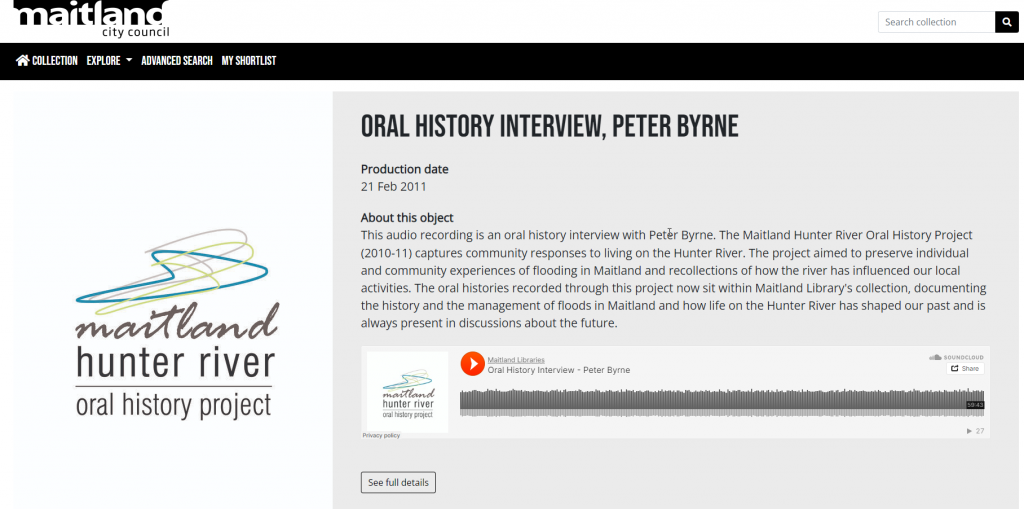
We’ve automatically embedded the SoundCloud audio file player whenever there’s an audio file link on that record in Vernon CMS. That link is stored on the Object record as part of the External File field. And then we’re automatically embedding SoundCloud’s audio player.
Current projects
That gives you an overview of different things that we’ve worked on over the last year. At the moment we have around a dozen online collection projects in progress. That work is always ongoing and every month there’s new sites that launch. We highlight those in our quarterly newsletter so you can see those projects as they get completed.
Support for design changes
We can also do minor changes to existing online sites easily. Part of your annual support agreement includes a budget of 4 hours a year for minor customisation.
If you already have Vernon Browser, that ongoing budget is there for us to make small changes. That might be swapping out an image on the homepage, it might be adding an extra featured collection, it could be assisting you with publishing one or two extra fields to the site.
So just get in touch with us if you ever have any of those small changes that you want to make to a site that’s already live.
Email support@vernonsystems.com.
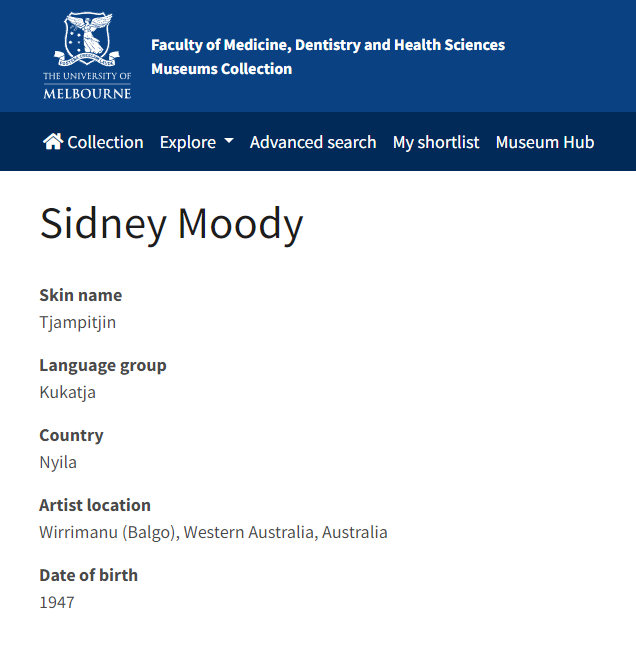
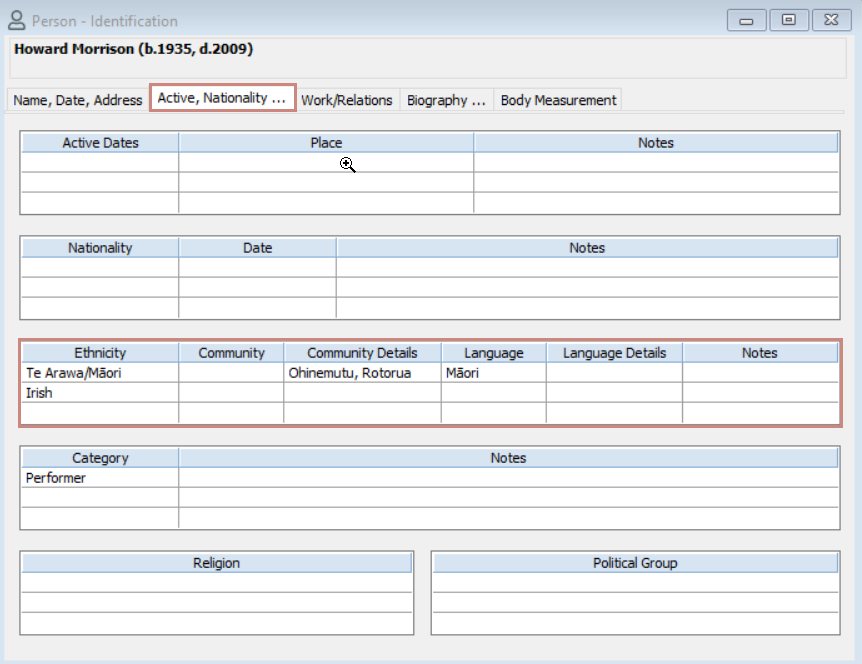
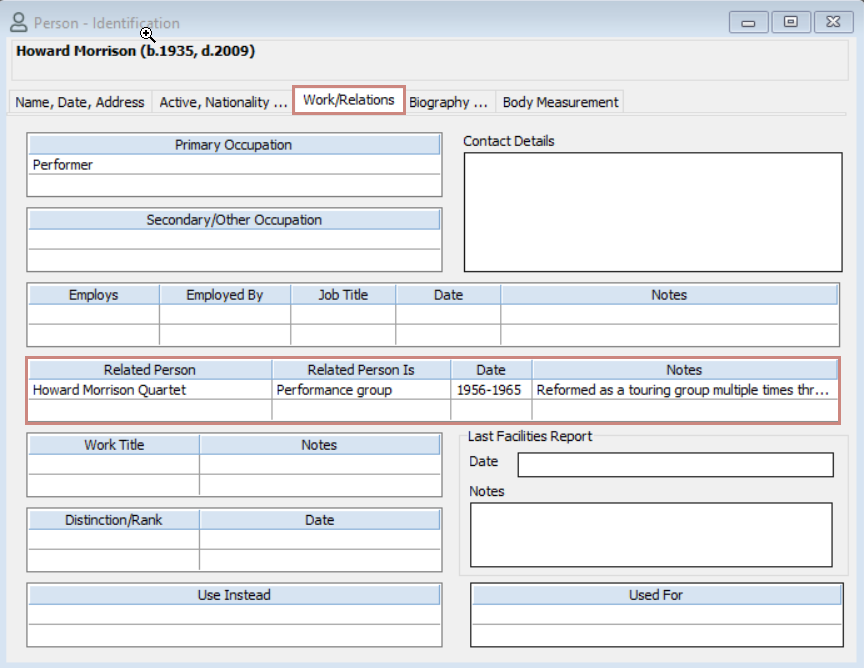
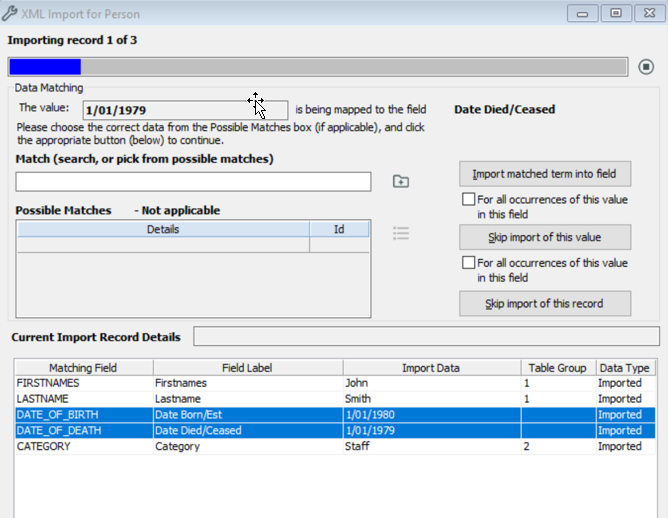
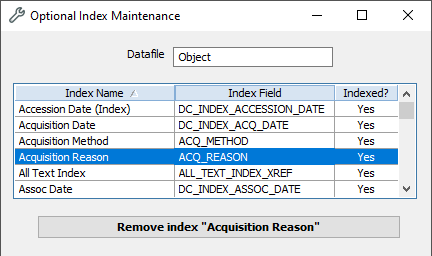

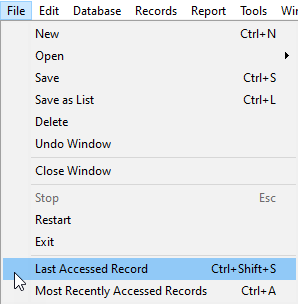
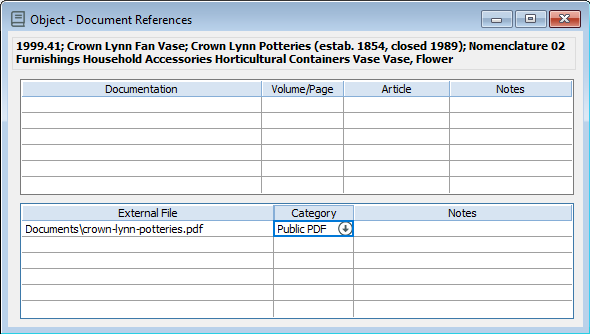
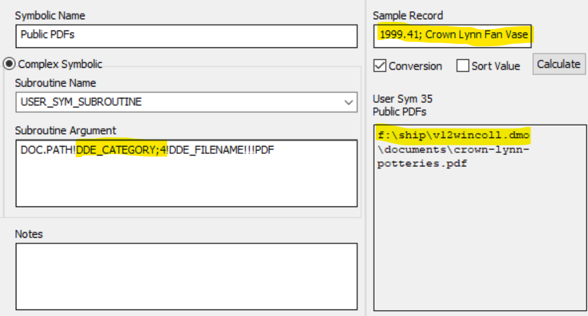
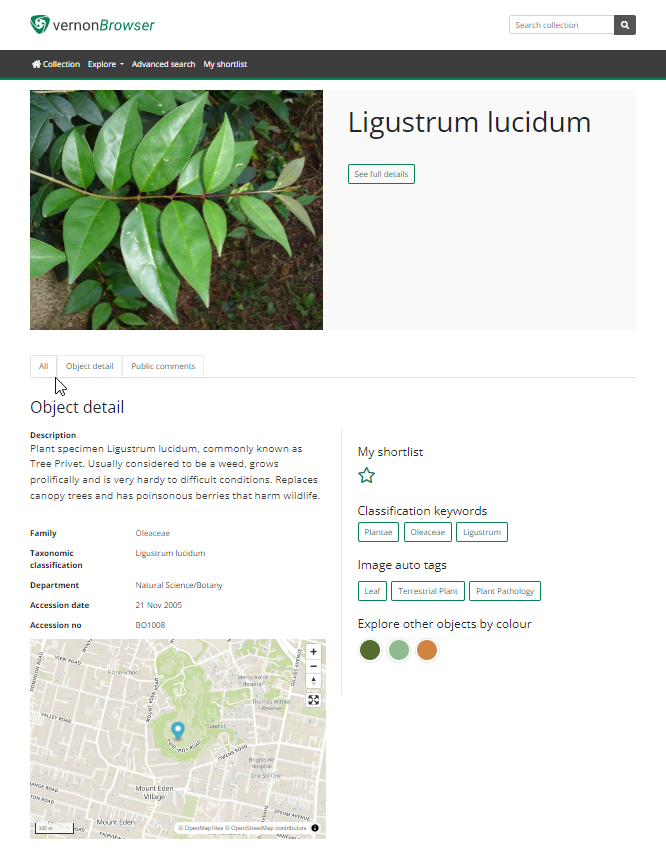
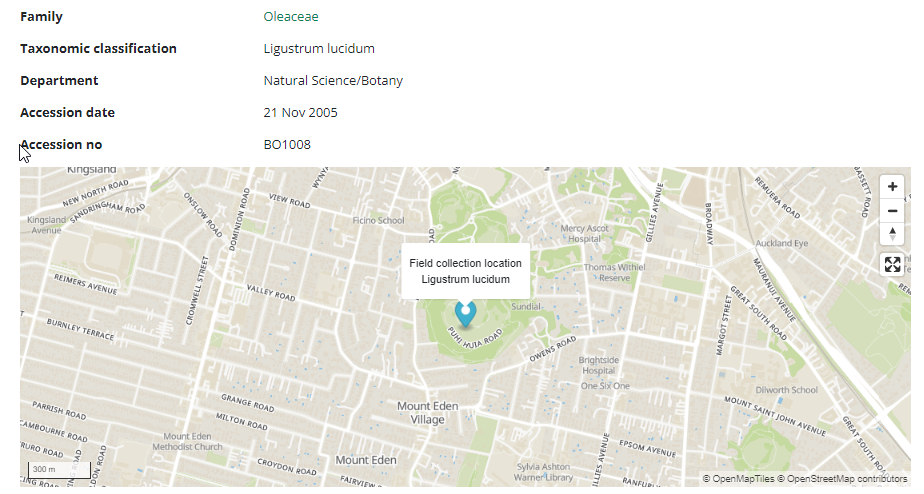
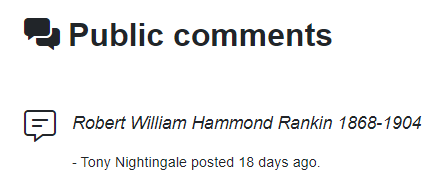
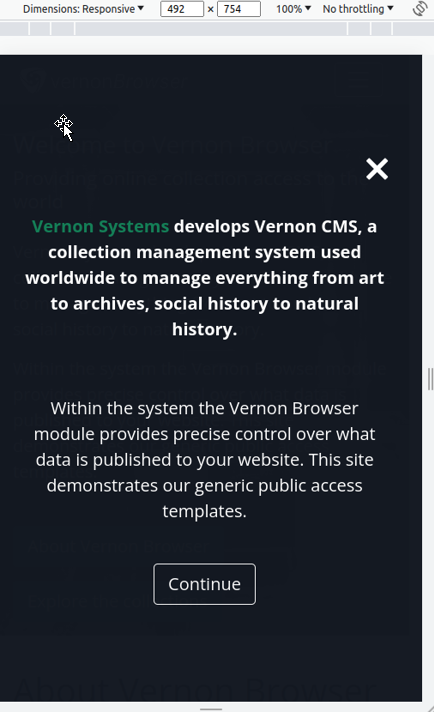
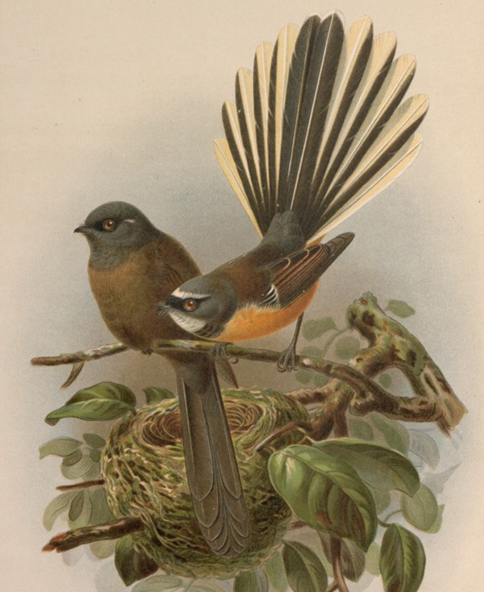
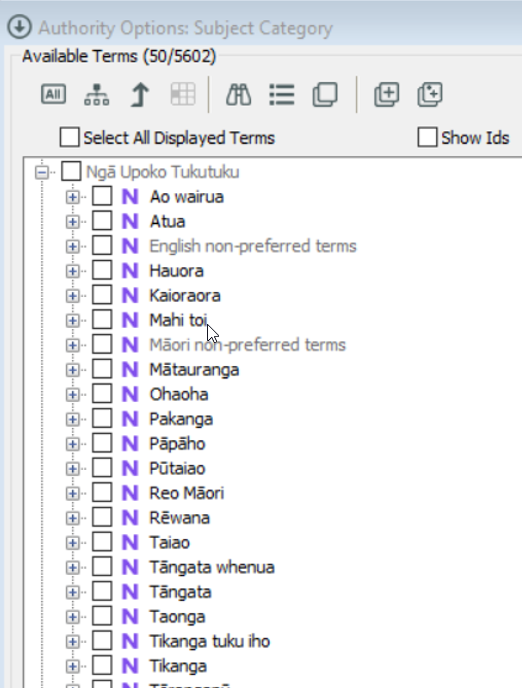
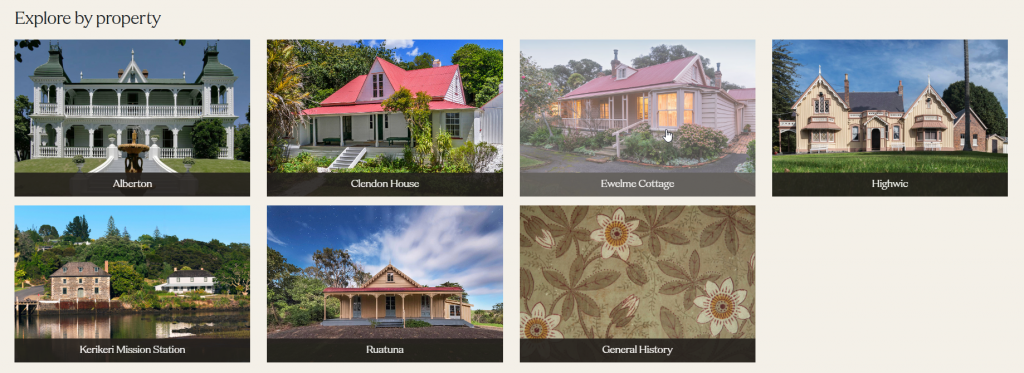
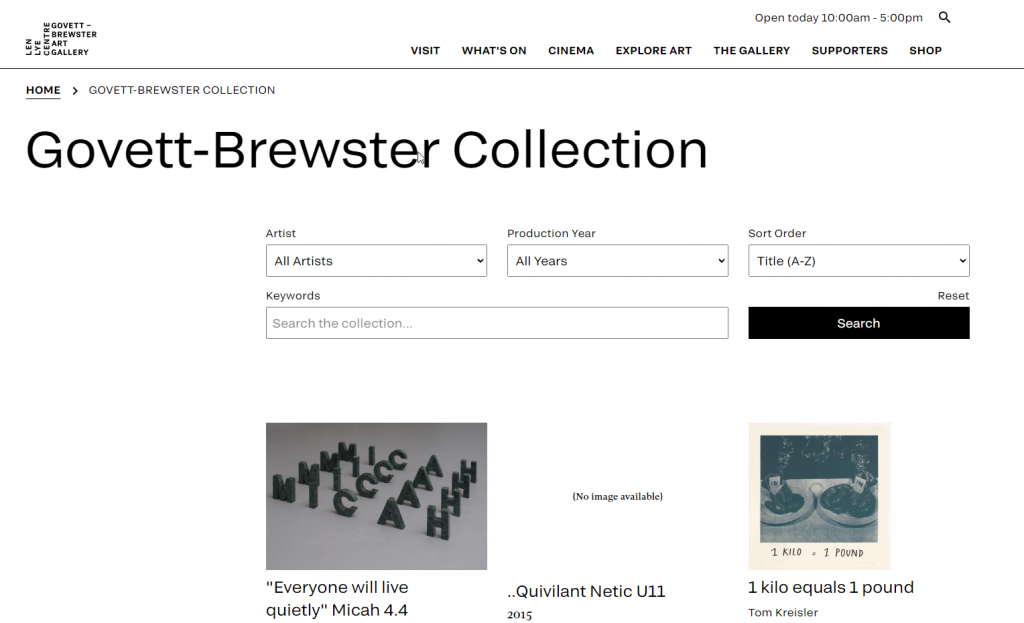

[…] Read the company update […]